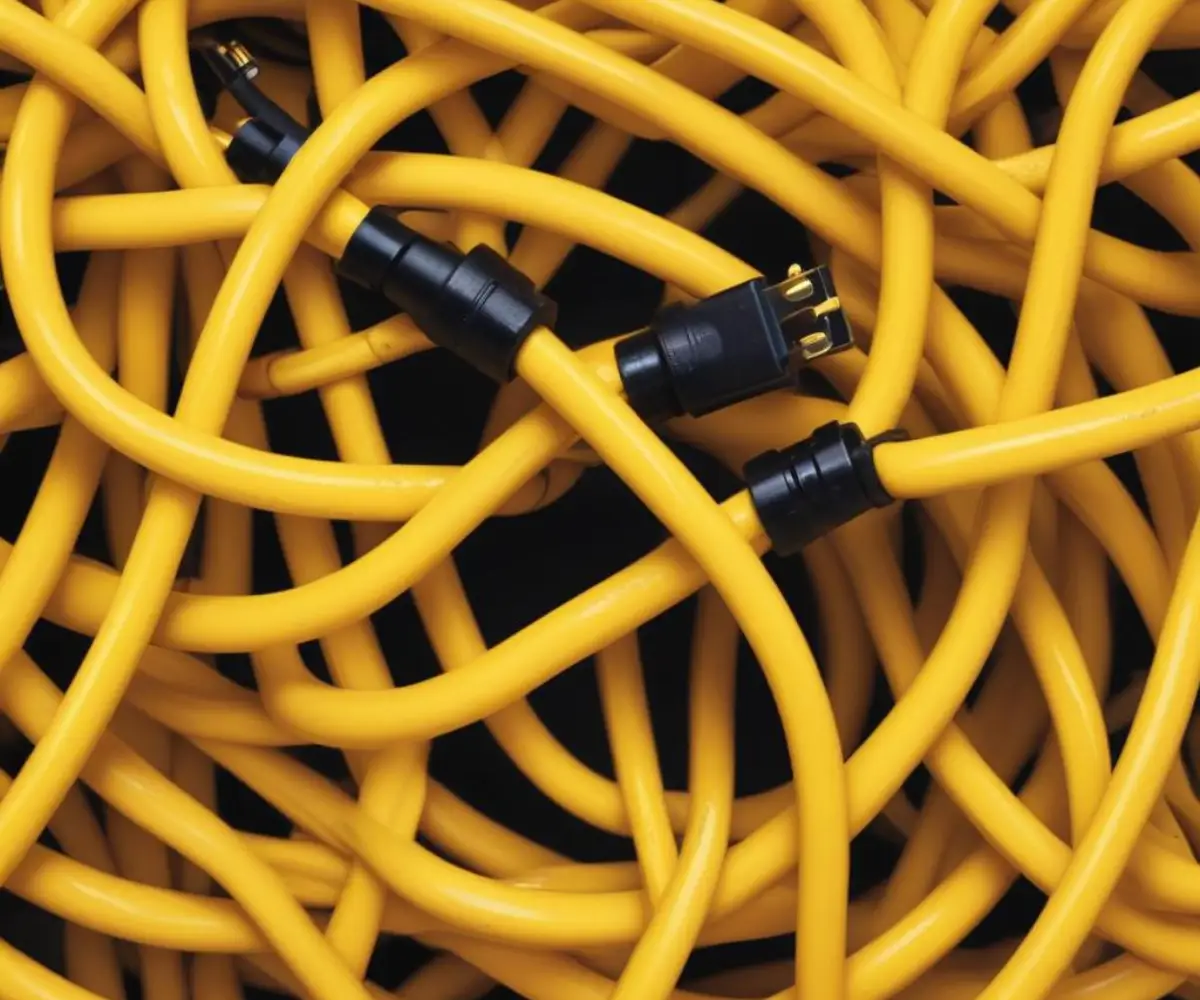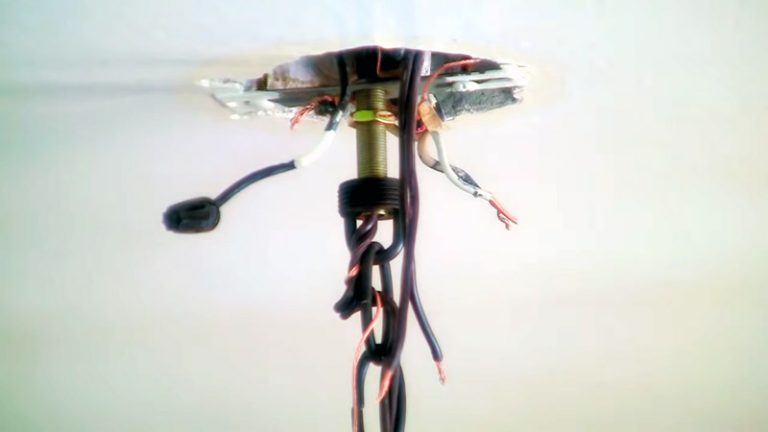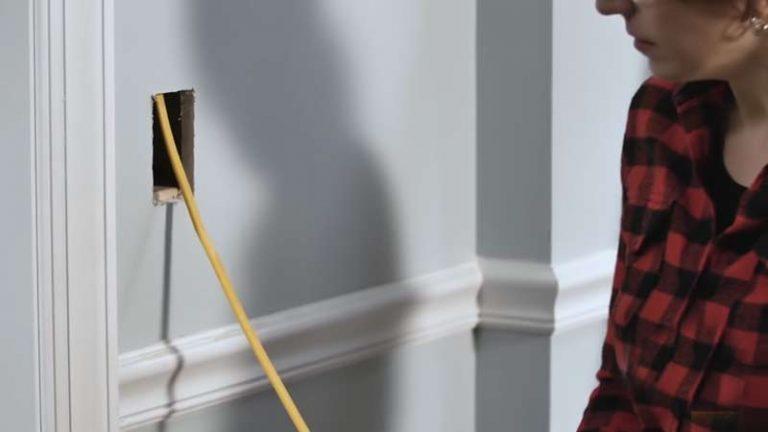Romex Extension Cord: The #1 Mistake That Could Burn Your House Down
You’re in the middle of a project. You have a piece of leftover Romex wire from a recent renovation, and you need a tough, heavy-duty extension cord to power your saw across the yard. The thick, sturdy appearance of the Romex cable makes it seem like a perfect, money-saving solution. After all, it’s heavy-gauge copper wire, isn’t it?
This is a common thought process for many DIY enthusiasts. But before you start wiring up a plug, you must stop and ask a critical question: is it actually safe to use Romex as an extension cord? The answer is an emphatic and unequivocal no.
While it might seem like a clever use of materials, creating a makeshift extension cord from Romex is a dangerous, code-violating practice that professionals would never endorse. It introduces severe risks of fire, electrocution, and damage to your tools. This article will explain the shocking truth behind why this is one DIY project you must avoid at all costs.

You'll Learn About
The Shocking Truth: Why Romex Is Not Extension Cord Wire
To understand the danger, you first need to understand that Romex and proper extension cord wiring are fundamentally different products designed for entirely different purposes. They are not interchangeable, and using one for the other’s job is a recipe for disaster.
Romex, officially known as Type NM-B (Non-Metallic) cable, is designed for one job only: permanent installation inside protected spaces like walls, ceilings, and floor joists. Its design is optimized for a static, protected environment where it will not be moved, bent, or subjected to physical abuse. Everything about it, from its conductors to its sheathing, is built for this specific application.
An extension cord, on the other hand, is designed for the exact opposite. It’s classified as “flexible cordage” and is built for temporary use, constant movement, flexing, and exposure to the elements. It needs to withstand being coiled, uncoiled, stepped on, dragged across abrasive surfaces, and potentially exposed to moisture and sunlight.
The Core of the Problem: Solid vs. Stranded Conductors
The single biggest reason you cannot use Romex for an extension cord lies deep inside the cable itself: the type of copper wire used. Romex uses solid-core conductors. This means each insulated wire (the black “hot,” white “neutral,” and bare “ground”) is a single, thick, stiff piece of copper.
Solid wire is excellent for permanent wiring because it stays put in electrical boxes and makes very secure connections under terminal screws in outlets and switches. However, it is extremely brittle. When you repeatedly bend solid wire, it develops stress fractures. Think of bending a paperclip back and forth; eventually, it weakens and breaks. The same thing happens to the copper inside Romex, leading to a catastrophic failure point.
Proper extension cords use stranded-core conductors. Each insulated wire is composed of many fine threads of copper bundled together. This construction allows the wire to be extremely flexible and durable, capable of withstanding thousands of bends without breaking. It’s specifically engineered for movement.
The Missing Protection: Insulation and Jacketing
The outer sheathing of a cable is its first line of defense. The vinyl jacket on Romex is relatively thin and is only designed to protect the wires during the initial pull through studs and joists. It offers minimal protection against abrasion, crushing, or impact.
Furthermore, the material is not rated for exposure to sunlight (UV rays), oils, or harsh chemicals, which can cause it to become brittle and crack over time. Inside the sheathing, a paper wrapper separates the conductors, which can easily absorb moisture.
Contrast this with a heavy-duty extension cord, such as one with an SOOW rating. This cable has a thick, tough, and flexible jacket made of rubber or thermoplastic. This jacket is specifically designed to resist abrasion, moisture, oil, and UV damage, making it safe for use on rough job sites and outdoors.
Top 5 Dangers of Using a DIY Romex Extension Cord
Understanding the design differences makes the risks clear. Using a Romex extension cord isn’t just “not ideal”; it’s an active hazard. Here are the top five dangers you introduce into your home or workspace.
1. Extreme Fire Hazard from Broken Wires
This is the most critical danger. As the solid copper conductors inside the Romex fatigue from being bent and coiled, they will inevitably break. However, the break might not be a clean separation. Often, a tiny gap is created where the electricity will try to jump, or “arc,” across.
This electrical arcing generates immense heat, easily reaching thousands of degrees. This intense heat can instantly melt the wire’s insulation and ignite the outer jacket and the paper filler inside the Romex. If this cord is near anything flammable—sawdust, carpeting, dry leaves—you have the perfect conditions for a devastating fire.
2. Electrocution and Shock Risk
The thin vinyl jacket of Romex is not built to be dragged across concrete or pinched in a doorway. It can easily be cut or worn through, exposing the live electrical conductors inside. Touching these exposed wires can result in a severe or even fatal electric shock.
Additionally, the bare copper ground wire in Romex is just as susceptible to breaking from flexing as the hot and neutral conductors. If the ground wire breaks, a faulty tool may not trip the circuit breaker. This can cause the entire metal housing of the tool to become energized, waiting to deliver a powerful shock to anyone who touches it.
3. It’s a Direct Violation of the National Electrical Code (NEC)
Electrical codes exist for one primary reason: to ensure safety. Using Romex as a flexible cord is a clear violation of the NEC. Specifically, NEC Article 400 outlines the proper uses for flexible cords and cables, and Article 334 details the uses for NM-B cable (Romex).
The code explicitly forbids using NM-B cable as a substitute for approved flexible cordage. This isn’t just a technicality. It’s a rule based on decades of experience with what causes electrical fires and accidents. Professional electricians are bound by this code, and for good reason.
4. You Could Void Your Homeowner’s Insurance
If the unthinkable happens and your homemade Romex cord starts a fire, you could face financial ruin. When insurance investigators determine the cause of a fire, they look for code violations and non-compliant wiring.
Discovering that the fire was caused by the improper use of building wire as an extension cord could give the insurance company grounds to deny your claim entirely. The small amount of money saved by not buying a proper cord is not worth risking your entire home and financial security.
5. Lack of Proper Grounding Integrity
The grounding system is a critical safety feature. As mentioned, the solid bare ground wire in Romex is prone to breaking under stress. A compromised ground connection is a hidden danger.
You may use the cord for weeks without issue, never knowing that your safety net is gone. The first time a tool develops an internal fault, you’ll find out in the most dangerous way possible. The stranded, insulated ground wire in a proper extension cord is designed to maintain its integrity alongside the other conductors through constant flexing.
The Right Tool for the Job: Choosing a Safe Extension Cord
The solution is simple: always use a properly rated, UL-listed extension cord designed for the task at hand. Making the right choice involves understanding a few key characteristics of legitimate extension cords. The table below highlights the critical differences between house wire and a proper heavy-duty cord.
| Feature | Romex (NM-B) Cable | Heavy-Duty Extension Cord (SOOW) |
|---|---|---|
| Conductor Type | Solid Copper | Stranded Copper |
| Flexibility | Very Low (Stiff) | Very High (Flexible) |
| Outer Jacket | Thin Vinyl, Paper Filler | Thick, Durable Rubber/Thermoplastic |
| Abrasion Resistance | Poor | Excellent |
| Moisture/UV Resistance | None (Indoor, Dry Locations Only) | Excellent (Weather Resistant) |
| Code-Compliant Use | Permanent, protected in-wall wiring | Temporary, flexible power connections |
Understanding Cord Lettering (SOOW, SJTOW, etc.)
The letters printed on an extension cord’s jacket tell you everything about its construction and approved use. Here’s a quick guide to some common ratings:
- S: Service Cord (Heavy-duty, rated for 600 volts)
- SJ: Junior Service (Lighter-duty, rated for 300 volts)
- T: Thermoplastic (The type of vinyl used for the jacket)
- O: Oil-Resistant Insulation
- OO: Oil-Resistant Insulation and Outer Jacket
- W: Weather and Water Resistant (Approved for outdoor use)
An SOOW cord is therefore a top-tier, heavy-duty cable suitable for the toughest indoor and outdoor environments.
Matching the Gauge to Your Needs
The gauge (AWG, or American Wire Gauge) of the wire determines how much electrical current it can safely carry. A lower gauge number means a thicker wire and a higher capacity.
- 16 Gauge: Light duty (lamps, small appliances, short distances).
- 14 Gauge: Medium duty (drills, circular saws, up to 50 feet).
- 12 Gauge: Heavy duty (table saws, compressors, longer runs).
- 10 Gauge: Extra-heavy duty (high-power tools, very long runs over 100 feet).
Using an undersized cord for a high-power tool will cause the cord to overheat and can damage the tool’s motor.
What If You Need Temporary Power for a Project?
The desire to make a Romex extension cord often comes from a legitimate need for power in a location without a convenient outlet. Whether you’re working in the yard, a shed, or a new construction area, there are safe and correct ways to get power where you need it.
The best temporary solution is always a high-quality, properly-sized extension cord. For more permanent needs, installing a new, dedicated circuit is the right answer. Sometimes the need for a long cord stems from not having an outlet where it’s needed for a new fixture. For specialized installations, like providing power for a modern bidet, a dedicated GFCI outlet is essential for both safety and proper function.
Even in unconventional locations, a permanent wiring solution is far superior to a dangerous cord. While you should never run a Romex cord to a fireplace, correctly installing an electrical outlet inside a fireplace mantel for a TV or other electronics requires careful planning and strict adherence to electrical codes.
Frequently Asked Questions (FAQ)
Can I use Romex for a 240V extension cord for my welder or EV charger?
Absolutely not. The risks are even greater with 240-volt applications due to the higher voltage and current. The potential for arcing, overheating, and fire is significantly increased. Always use a properly manufactured, UL-listed 240V extension cord with the correct NEMA plug configuration for your device.
What if I only use the Romex cord indoors and don’t bend it much?
Even in a seemingly “safe” scenario, the risk remains. The cord will still be bent during storage and deployment, causing cumulative damage to the solid conductors. Furthermore, the jacket is not designed to resist being stepped on or pinched by furniture, which can happen in any indoor environment. There is no safe application for a Romex extension cord.
My friend made a Romex cord and it works fine. What’s the big deal?
This is a classic case of anecdotal evidence versus proven safety standards. A homemade cord might “work” for a while, but it is failing internally with every use. It’s a ticking time bomb. The danger isn’t that it might fail, but that when it does, the failure can be catastrophic and without warning.
Conclusion: Don’t Gamble With Your Safety
The temptation to cut corners and use leftover Romex for an extension cord is understandable, but it’s a gamble you should never take. The fundamental differences in design—solid core wire vs. stranded core wire and inadequate jacketing—make it unfit for this purpose. The risks of fire, electrocution, and property loss are severe and well-documented.
Always invest in a proper, UL-listed extension cord that is rated for your specific needs. It’s a small price to pay for the safety of your home, your equipment, and, most importantly, your family. When it comes to electricity, there is no substitute for doing things the right way.


